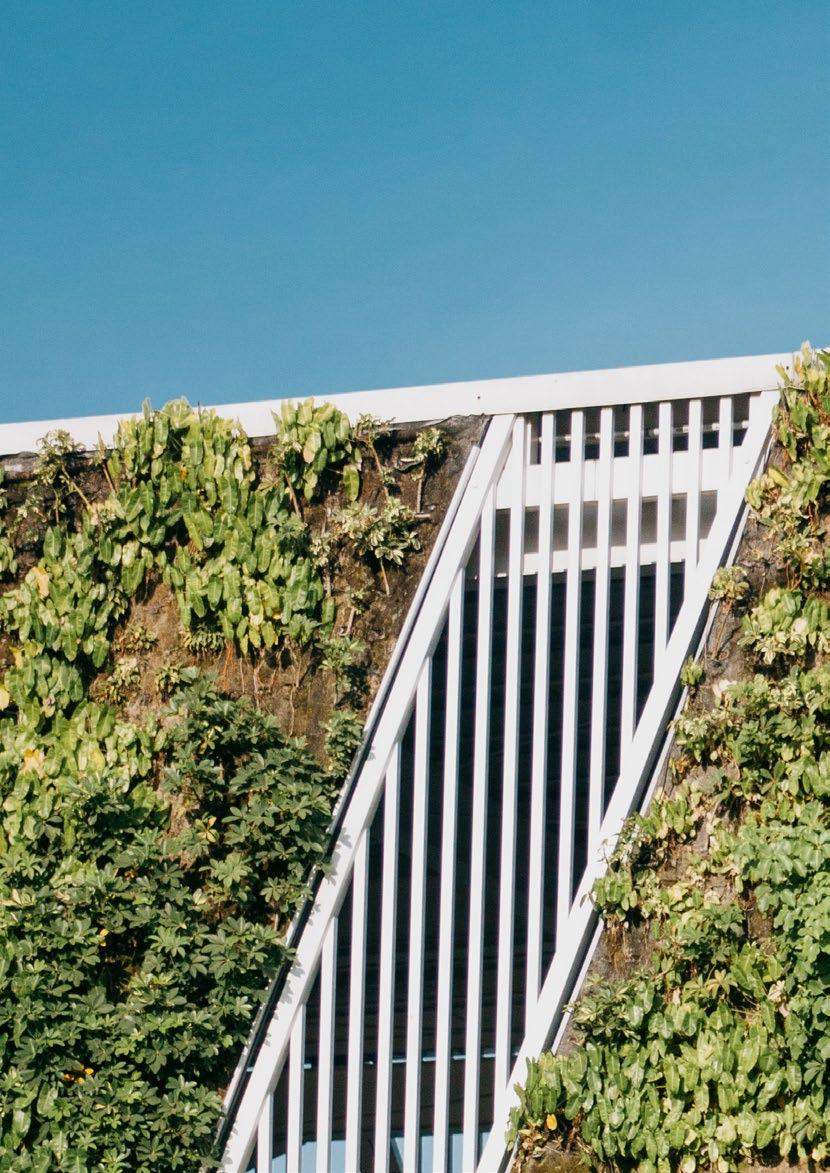THE WELL v .2 BUILDING STANDARD™




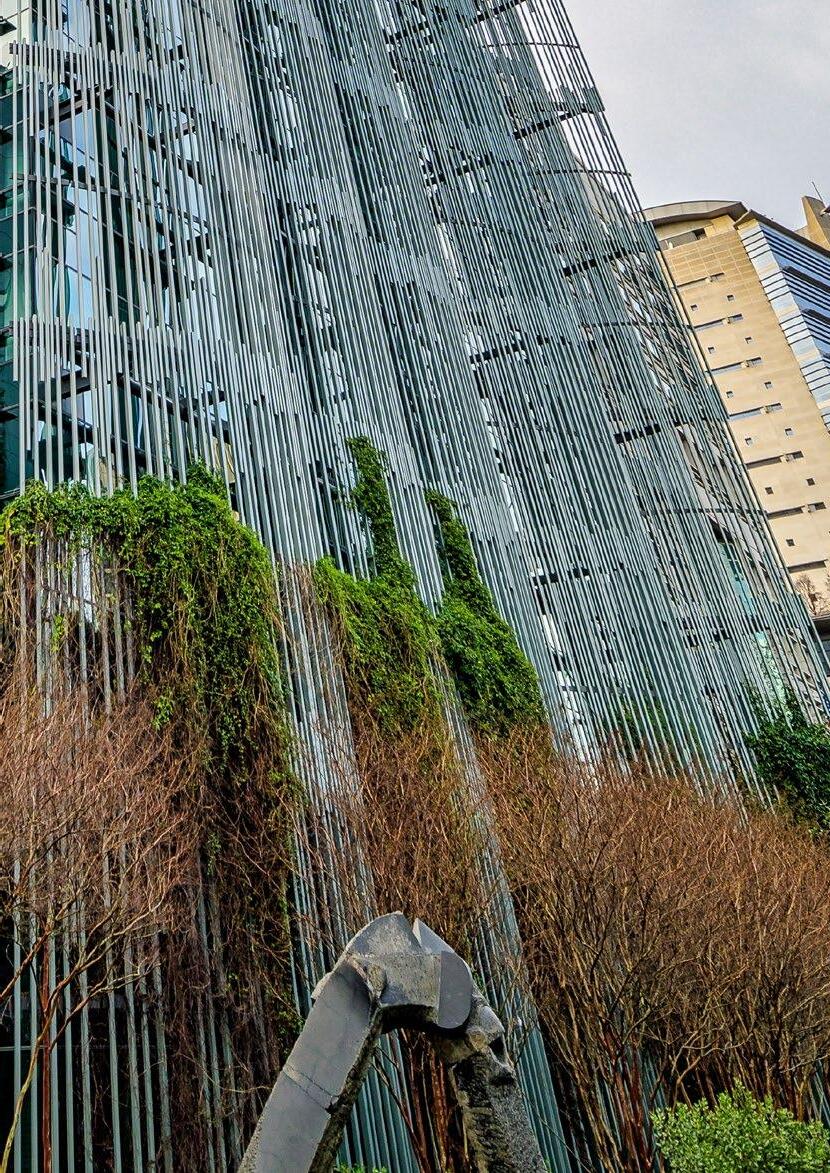
The role buildings can play in human health and well-being has never been more evident or more important. Thanks to an evolving evidence base, we understand more about the relationship between the physical environment and human health than ever before. We know how to create spaces that enhance, rather than hinder our health and well-being. We can measure and then improve the quality of our air, water, and light. We can design environments that fuel our bodies, move us, keep us connected, inspire our best work and facilitate a good night's sleep.
The WELL v.2 Building Standard is the next step in the construction of “green” buildings. WELL v.2 is a “performance-based system for measuring, certifying, and monitoring features of the built environment that impact human health and well-being, through air, water, nourishment, light, movement, thermal comfort, sound, materials, mind & community.
WELL Certification is a roadmap for organizations looking to advance human health and well-being in a single asset or location.
The WELL v.2 Building Standard (WELL) is a roadmap for creating and certifying spaces that advance human health and well-being. Developed over 10 years and backed by the latest scientific research, WELL sets pathways for accomplishing health-first factors that help every one of us to do our best work and be our best selves by supporting our physical and mental health. Rigorous performance standards for design interventions, operational protocols and company-wide practices are verified by a third party. WELL works at any scale, from a single interior space to an entire organization.
WELL Certification is ideal for organizations implementing WELL within a single building or asset. The program helps organizations monitor ongoing building performance and collect employee feedback, enabling them to take a data-driven approach to their health and well-being efforts. Organizations can leverage quantifiable metrics from WELL Certification to advance Environmental, Social and Governance (ESG) reporting efforts.

Spanning 108 features and 10 concepts, WELL is a roadmap for improving the quality of our air, water and light with inspired design decisions that not only keep us connected but facilitate a good night's sleep, support our mental health and help us do our best work everyday. Projects are required to pursue a certain subset of features or strategies within the 10 WELL v.2 concepts, including;
In order to demonstrate compliance with program requirements, projects must submit documentation, which is evaluated and tested by a third party. Projects earn points toward their WELL Certification goal with every feature they achieve. Upon achievement, projects receive a plaque indicative of one of four levels of certification based on the total number of points earned.
• WELL Certified Bronze: 40 points
• WELL Certified Silver: 50 points
• WELL Certified Gold: 60 points
• WELL Certified Platinum: 80 points
Projects must achieve all preconditions, as well as a certain number of points towards different levels of WELL Certification:

Projects may earn no more than 12 points per concept and no more than 100 points total across the ten concepts.
Projects can also pursue an additional ten points in the Innovation concept. A project may seek additional points in concepts where the project has already reached the 12-point maximum, by submitting features or parts not already pursued within those concepts as innovations for Feature I01. These submissions are worth one point per part, regardless of the listed point value of that part.



Regrettably the function of noise reduction within a learning, working, relaxing or recuperating space is often neglected when a space is designed and fit-out. Interior finishes for ceilings, walls and floor surfaces are generally selected for their aesthetic appeal, decorative coordination, affordability, durability and sustainability. However, one key factor often neglected in the selection process of these large surface areas is how they contribute to suppress ambient noise created from either within, above or outside the enclosed space, which can all affect the occupant's wellbeing.
Modern space design is adopting a more open plan co-working approach; however, this increases the risks of noise distraction and reduces concentration levels particularly for individuals who suffer from neurodiverse conditions and as a result will reduce the productivity level.


Excessive noise levels over a prolonged period of time can damage your hearing. This may happen so gradually and painlessly that you may not even notice the minor deterioration from one day to the next. Excessive noise in the workplace is often attributed to other health problems as well, such as;
• headache or migraine
• elevated blood pressure complications
• fatigue
• irritability and contributed insomnia
• digestive disorders
• increased susceptibility to colds and other minor infections.
Carpets Inter EcoSoft® modular carpet tile achieves an average sound absorption of 30% (NRC @ 0.30). However, when we talk about carpet, another value we need to consider is the Improvement of Impact Sound abbreviated as IIS. This is a value that indicates a materials ability to attenuate floor-to-ground noise. A good example of this is when people are heard walking above in an upstairs level. Whilst a hard flooring would provide poor ISS (average 80dB), a carpeted space will reduce noise down to an average of 52dB, considerably reducing the sound heard by the occupants below by 28dB.
Carpets Inter EcoSoft® modular carpet tile achieves an ISS rating of 28dB as tested under ISO standard #ISO10140-3:2010. Investing in EcoSoft® carpet tile throughout dual and multi-level buildings considerably reduces reflections and the ambient noise level within the occupied space.
For more information on sound absorption properties of alternative backing types, please contact your local CI representative.
Ergonomic and universal design play a significant role in mitigating physical and mental stress. Most of the adverse health effects related to ergonomics are seen in the musculoskeletal and nervous systems of the human body.

Carpet effectively absorbs foot impact and as a result reduces leg muscle fatigue to a greater degree when compared with hardfloor impact. Comfort under foot translates to a higher degree of comfort for the occupant and may assist to increase the overall productivity of the staff working within the facility.
Consolidated laboratory test results show that Carpets Inters proprietary EcoSoft® PET felt cushion back modular carpet tiles manufactured using recycled plastic bottles, will consistently out-perform and achieve a far better pile thickness recovery than an equivalent pile weight & density of hard back carpet tile (full test data is available upon request).
EcoSoft® cushion backing prolongs the products appearance retention and underfoot comfort, providing occupants within the facility increased longevity of wear.
The WELL Building Standard promotes comprehensive ergonomics solutions that help prevent stress and injury and facilitate comfort and well-being. These design strategies not only provide access for people with limited mobility, but also prevent injury by encouraging navigable spaces for everyone.

With their superb dust-trapping properties, carpets are conducive to a healthy living environment. Dust settles quickly and is then securely held by the pile fibers of the carpet until it is vacuumed again.
The dust is not disturbed by circulating air draughts, and this means that the dust content of the indoor air is kept low. This is particularly important since dust particles also act as carriers for germs, allergens, and other air contaminants.

The myth that carpet promotes dust-mite allergies is untrue, because these are attributable to dust mites – the actual allergen itself. Bedding and bed linen contain up to 70% more house-mites than carpet. Regular vacuuming and cleaning, together with adequately ventilated and dry rooms, mean that it is virtually impossible for a carpet to contain, entrap or transmit allergens.
All Carpets Inter carpet tile colorways have been tested to determine their LRV ratings, which are available upon request.
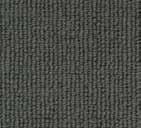

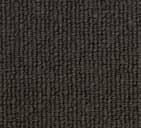



The installation environment is a multi-person commercial or contract office typically requiring a minimum Australian Carpet Classification Scheme (ACCS) grading of Contract Heavy Duty. While an LRV range of 1% to 12% may be considered acceptable during the fit-out concept stage, caution must be exercised in the choice of carpet shades that have a measured LRV of 8% to 12% as a higher level of cleaning maintenance will be required to retain an acceptable level of appearance retention over the life of the carpet. Carpets with LRV results greater than 13% will need a correspondingly very high level of cleaning maintenance in a commercial/contract environment.

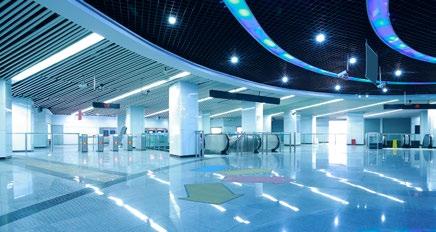
The WELL Light concept promotes exposure to light and aims to create lighting environments that are optimal for visual, mental and biological health. The lighting environments where humans spend their time impact their visual, circadian and mental health. Currently, lighting conditions in most spaces are designed to meet the visual needs of individuals, but do not take into account circadian and mental health. This presents an opportunity for projects to provide lighting conditions required by humans for optimal health and well-being.
WELL aims to establish that a lighting environment will reduce circadian phase disruption, improve sleep quality and positively impact mood and productivity. The selection of carpet shade is influenced by a range of factors that include cleaning maintenance and appearance retention properties as well as the comfort and safety of building occupants. It has become important to understand the light reflectance of fit-out materials, including carpets, installed in commercial buildings in order to efficiently plan lighting and provide visual contrast where required.

Thermal comfort is another factor that plays a large role in the way we experience places where we live and work.
The WELL Thermal Comfort concept aims to promote human productivity and ensure a maximum level of thermal comfort among all building users through improved HVAC system design and control and by meeting individual thermal preferences.
Carpets can make a measurable contribution to retaining the warmth in a room and therefore saving energy. Carpets have low heat conduction and are natural thermal insulators creating a heat barrier.

As a result, as much as 10% of the heat in a room which would be dissipated with smooth floorcovering is retained in the room by the carpet.
This can result in a considerable reduction in the use of HVAC systems (heating & air-conditioning) in the transition periods between warm and cold seasons. It has been estimated that up to 30 days’ worth of heating energy can be saved, resulting in a reduction of <4-6% of energy related carbon footprint and a considerable reduction in heating bills.
A room with EcoSoft® promotes thermal comfort, saves energy and also contributes to a reduction in Green House gas emissions (CO₂e), that are a major cause of climate change.
"We absolutely love our EcoSoft carpet. The carpet is an amazing initiative to showcase how we can recycle and reuse what was once single-use plastic like PET recycled bottles to turn it into a beautiful interior design finish! At Workit Spaces, our mission is to enable sustainable businesses to thrive by creating innovative ecosystems. We're determined to go carbon neutral across our ever-growing network of business hubs, SaaS platform and fulfilment centres. By using the EcoSoft carpet, we've been able to incorporate environmental sustainability into our eCommerce hubs. We believe everyone plays a vital role in reducing the impacts of climate change and using materials like the EcoSoft carpet to furnish our hubs is a great way to be reminded of how we can repurpose, recycle, reuse and reduce waste."
 Sonia at Workit Spaces
Installation at Workit Spaces
Sonia at Workit Spaces
Installation at Workit Spaces

A beautiful and meaningful space in which design aesthetics are expressly considered can have a positive impact on occupant morale and mood. Elements that provide visual complexity, balance and proportion can impart a sense of comfort, ease and potentially mitigate stress.
• Plants improve air quality by removing pollutants and adding oxygen to the surroundings.
• Dry conditions from recirculated air is improved with humidity from foliage.
• Plants reduce stress by providing a relaxing, restful ambiance to a room.
Using plants help incorporate health and well-being into architectural and interior designs. A poll taken by Human Spaces and published in The Global Impact of Biophilic Design reported natural elements in the workplace environment such as greenery and sunlight gave workers a 15% higher level of well-being. And they were 6% more productive and 15% more creative.
A living wall provides access to nature and meets part of the WELL v.2 Building Standards certification requirement for greenery.

 Shimmer - LS02
Shimmer - LS02

In November 2016, the WELL Building Standard™ and BREEAM were aligned, meaning submitted documentation can be recognized by both organizations, saving time and money. In April 2017, WELL and LEED also aligned to work in synergy. If “sustainabilityand health are synonymous” (Rick Febrizzi, CEO of IWBI), it makes total sense for these systems to work together.
WELL Certification is accessible and applicable to multiple types of locations and spaces. Some popular sectors include:
• Hospitality
• Office
• Education
• Healthcare
• Industrial
• Retail
• Residential
Carpets Inter carpet tiles are available in a wide variety of aesthetically pleasing patterns in numerous color options, in both recycled cushion and hard backing.
For more information, please contact your local CI representative.

Simply put, WELL Certification is for everyone, everywhere.
The threat to our marine life is at a critical level due to the massive amounts of plastic being dumped into our oceans every day. To date we have recycled over 830 million PET bottles into the manufacturing our unique ‘EcoSoft®’ cushion back modular carpet tile, thus reducing the effects of plastic pollution on our planet... it’s just good stewardship!


At Carpets Inter, we create modular carpet that does more than just make the world more beautiful; it makes it more livable. We do this with products that meet stringent indoor air-quality needs, are safe to manufacture and utilize and incorporate recycled materials wherever feasible including our unique EcoSoft® backing fabricated from millions of recycled plastic bottles. Our commitment to ecological sustainability extends beyond our product. We practice it in everything we do – from manufacturing facilities that maintain the highest environmental standards, to reducing our carbon footprint in every facet of our global business.

All are visible on the Sustainable Minds site <Click>
EcoSoft® is a unique, high-performance and environmentally conscious carpet tile cushion backing – responsibly recycling millions of discarded single-use PET water bottles into a very good use. This solution dyed nylon PET felt modular carpet tile is recognized by the International Living Future Institute (ILFI) under their DECLARE Label award program as RED LIST FREE, the highest designated level acknowledging no harmful material content. This achievement further demonstrates Carpets Inter genuine commitment to material transparency, providing safety and hygiene towards healthy occupied spaces, while aspiring to achieve carbon neutrality aligned with Well Building Certification.

From repurposing and reusing waste PET bottles into our product, providing our manufacturing plants organic waste to local agriculture and planting thousands of trees each year in our local community... it’s just good stewardship!
For every +1% more organic material per acre present in the soil, the earth will naturally sequester an additional 10 Tons of Carbon draw down per year from the atmosphere. Under the Paris Climate Change Agreement, there is no such thing as a Carbon offset project. Taking responsibility means you should actively participate in an Emission Reduction or a Climate Change Mitigation project, such as carbon sequestration. At Carpets Inter we practice prevention at source rather than solely relying on purchasing Carbon [marketing] credits to offset our carbon footprint.
Since 2014, Carpets Inter has been repurposing and donating treated sediment from our manufacturing operations, contributing to produce over 15.5 million Kilograms (310,000 x 50Kg sacks) of organic fertilizer to annually fertilize over 5,250 acres of Thailand’s agricultural Croplands.

WELL Building Standard verifies the quality of space and its ability to positively impact wellbeing and productivity. WELL certified building solely focuses on optimum human health and performance in workspaces that increase productivity and happiness at work. The below information demonstrates how Carpets Inter EcoSoft tiles contribute to the WELL Building Standard.
CREDIT CONTRIBUTION AIR
A05 ENHANCED AIR QUALITY Part 2: Enhanced Thresholds for Organic Gases (Max: 1 Pt)
LIGHT
L02 VISUAL LIGHTING DESIGN
Part 1 Light Levels for Visual Acuity
MATERIALS
X01 FUNDAMENTAL MATERIAL PRECAUTIONS
Part 1 Restrict Asbestos
Provision of enhanced air quality indoors positively impacts human health, wellbeing, and performance and constitutes one of the most important factors of healthy buildings.
The following thresholds are met:
a. Formaldehyde less than 13.4 ppb.
EcoSoft cushion back carpet tile meets the requirement, refer to the tested and compliant with the GLP7543.
Provide visual comfort and enhance acuity for all users through electric lighting.
The light reflection value (LRV) can be given for all products upon request.
The following newly installed building materials contain asbestos less than 1% by weight:
c. Wallboard/millboard, resilient floor covering, roofing and siding shingles (including metal cladding), and construction mastics.
EcoSoft cushion back carpet tile is free from Asbestos.
X10 VOLATILE COMPOUND REDUCTION
Part 1 Manage Volatile Organic Compounds (Max: 2 Pt)
X11 LONG-TERM EMISSION CONTROL
Part 2 Manage Flooring and Insulation Emissions (Max: 1pt)
The following requirements are met:
a. At minimum, 20% by cost of the following newly installed components contain halogenated flame retardants at less than 100 ppm or the extent allowable by local code:
3. Flooring, ceiling, tiles, and wall coverings.
EcoSoft cushion back carpet tile does not contain halogenated flame retardants.
At least 90% (by area) of newly installed flooring and thermal and acoustic insulation (excluding duct and pipe insulation) inside the building meets the following VOC emission thresholds: [95]
a. California Department of Public Health (CDPH) Standard Method v.1.1 -2010 or any more recent version
EcoSoft cushion back carpet tiles are tested and compliant with the Indoor Air Quality program of CRI, GLP 7543
MATERIAL
X13 ENHANCED MATERIAL PRECAUTION
Part 1 Select Optimized Materials (Max: 2 Pt)
X14 MATERIAL TRANSPARENCY
Part 1 Promote Ingredient Disclosure (Max: 2 Pt)
Newly installed furnishings, built-in furniture, interior finishes and finish materials comply with some combination of the following programs, earning points based on the table below:
Percent Compliance by Cost Points 15% 1 25% 2
a. Declare: Living Building Challenge Red List Free, Declare: Living Building Challenge Compliant or Living Product Challenge label.
Carpets Inter provides material transparency through Declare labels Red List Free
Newly installed interior finishes and finish materials, furnishings (including workstations) and built-in furniture have some combination of the following material descriptions, with ingredients identified and disclosed to 1,000 ppm and earning points based on the table below: a. Declare Label.
b. Health Product Declaration.
Carpets Inter publishes HPDs on the HPDC repository and provides Declare label for EcoSoft cushion back carpet tile.
MIND
M02 ACCESS TO NATURE
Part 1 Provide Access to Nature
Projects integrate and encourage occupant access to nature within the project boundary through the following:
a. Indirect connection to nature through use of natural materials, patterns, colors or images.
Carpets Inter offers tiles collection that creates patterns and color schemes inspired by nature.
https://v2.wellcertified.com/en/wellv2/overview
https://well.support/explore~dacf845e-dd8c-407e-b4cb-1157fb9c9ff9
https://carpetsinter.com/s/CSR-Report-2022.pdf
https://kisstheground.com/ https://theoceancleanup.com/
https://greenplantsforgreenbuildings.org/wp-content/uploads/2015/08/ Human-Spaces-Report-Biophilic-Global_Impact_Biophilic_Design.pdf
https://resources.wellcertified.com/people/leadership/rick-fedrizzi/ https://www.buildings.com/print/content/10186878 WWW.CARPETSINTER.COM
Carpets Inter is a brand under TCM Surface, a division of TCM Corporation headquartered in Thailand. At Carpets Inter, we aim higher. We work to be a better company. This endeavor has its foundation in the manufacturing of modular carpet products that are well designed, durable, and comfortable underfoot; and is sustained through shared values of environmental responsibility, social accountability, and economic fairness that make a positive impact wherever our products are sold or used throughout the world. We are, above all, a multinational company with a multicultural commitment to good global citizenship.
